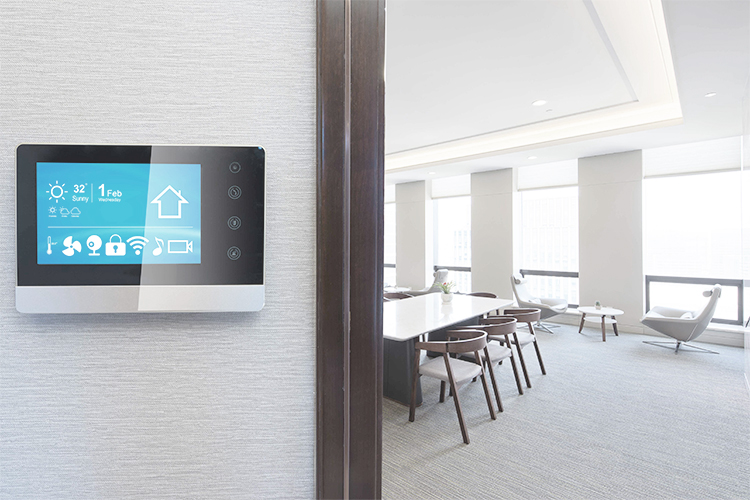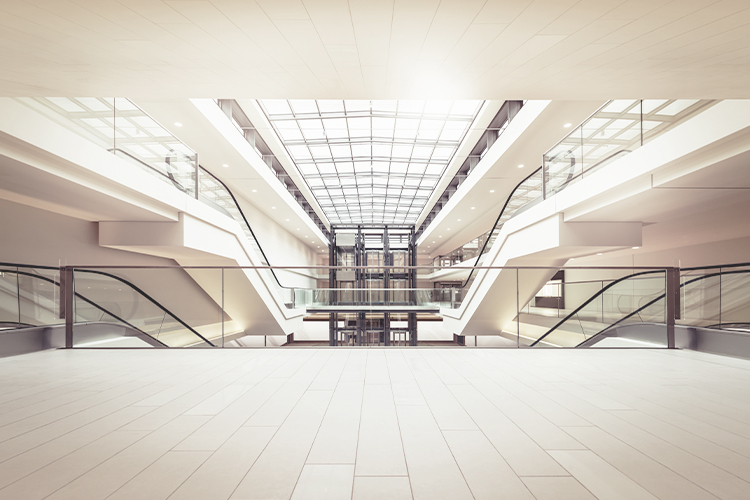
Light fixtures provide a smart way to integrate networked controls within a building because they offer an infrastructure capable of taking on new levels of functionality.
Features such as motion-sensing lights, dimmers and color-changing bulbs are all examples of stand-alone lighting controls that have slowly made their way into workplaces, commercial buildings and homes.
With technology advancing rapidly, it’s become commonplace to have two-way communication with lighting fixtures. This means sensors in lights provide data that we can use to monitor performance of lighting systems and create a more efficient and comfortable environment.
As we look to the future of what networked lighting controls can mean for businesses, we’ve detailed some of the most common applications of advanced lighting controls.
Uses for Advanced Controls in Commercial Lighting
These examples give sustainability managers and building owners an understanding of real-world applications for adding controls to lighting.
Scheduling + Occupancy
By setting lights to turn on during business hours and off at closing time, companies can save energy by keeping lights off when they are not needed.
Similarly, occupancy refers to whether or not a person is in a space. Lighting controls can sense when a person is in a room, turn on the lights, and automatically adjust brightness. This can increase the comfort of a space and save energy expenses when rooms are not in use.
Daylighting
Daylighting senses ambient light conditions in the space, and adjusts accordingly taking into consideration natural lighting from windows and skylights.
Indoor Positioning
Indoor positioning connects lights to people’s cell phones to track their footpath throughout a store. It is especially relevant in retail settings and can be used to offer special discounts when a person stops at a product or to optimize product placement for increased purchases.
Task Tuning
Oftentimes, people prefer a certain ambiance for specific tasks. This is where task tuning comes in. Lighting controls allow occupants to adjust the brightness of lights and the temperature of light to meet their preferences for whatever task is at hand.
Asset Tracking
Asset tracking allows real-time location tracking by adding sensors to products, inventory or supplies. The sensor communicates with overhead lights to identify the object’s location within a building. This allows employees to quickly find specific items within a warehouse or for wheelchairs to be found in a hospital or airport.
Asset Management
With asset management, the control platform has the potential to sense whether or not a room is occupied and automatically adjust the light and airflow for comfort. This integration helps companies gain the most energy savings in their buildings.
In addition, the “self-reporting” systems allow you to understand the health of the system and provide predictive maintenance.
System Integration
The majority of buildings control lighting and HVAC separately, but networked lighting controls have opened the door to integrating lighting and HVAC within a single automation platform.
Visual Light Disinfection
Visual light disinfection uses high violet content white light to sanitize surfaces. It’s a highly valuable feature in hospitals, daycares, fitness centers, locker rooms and other environments where microbes are common.
These are just a few examples of ways to use commercial lighting control systems to create efficiencies in energy usage and optimal environments for occupants. When thinking of the potential for advanced lighting controls in your business, EMC’s lighting specialists can advise on the best control features to meet specific business goals.
See how we can put the power of controls to work for your company by requesting a consultation.

